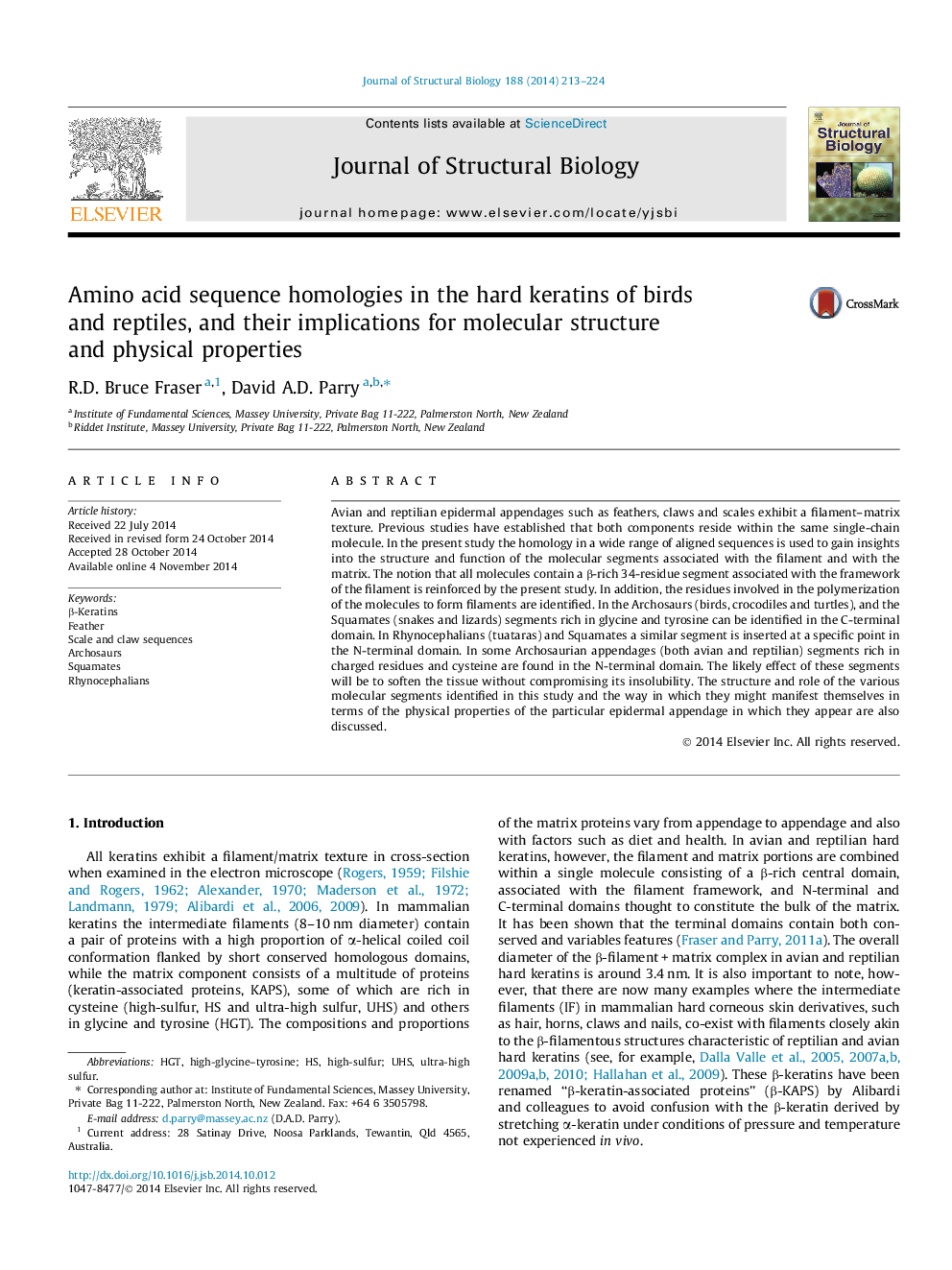| کد مقاله | کد نشریه | سال انتشار | مقاله انگلیسی | نسخه تمام متن |
|---|---|---|---|---|
| 5913965 | 1162713 | 2014 | 12 صفحه PDF | دانلود رایگان |
Avian and reptilian epidermal appendages such as feathers, claws and scales exhibit a filament-matrix texture. Previous studies have established that both components reside within the same single-chain molecule. In the present study the homology in a wide range of aligned sequences is used to gain insights into the structure and function of the molecular segments associated with the filament and with the matrix. The notion that all molecules contain a β-rich 34-residue segment associated with the framework of the filament is reinforced by the present study. In addition, the residues involved in the polymerization of the molecules to form filaments are identified. In the Archosaurs (birds, crocodiles and turtles), and the Squamates (snakes and lizards) segments rich in glycine and tyrosine can be identified in the C-terminal domain. In Rhynocephalians (tuataras) and Squamates a similar segment is inserted at a specific point in the N-terminal domain. In some Archosaurian appendages (both avian and reptilian) segments rich in charged residues and cysteine are found in the N-terminal domain. The likely effect of these segments will be to soften the tissue without compromising its insolubility. The structure and role of the various molecular segments identified in this study and the way in which they might manifest themselves in terms of the physical properties of the particular epidermal appendage in which they appear are also discussed.
Journal: Journal of Structural Biology - Volume 188, Issue 3, December 2014, Pages 213-224
